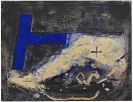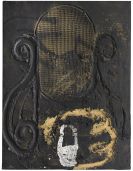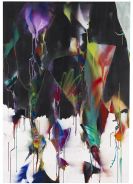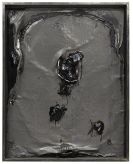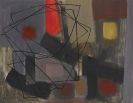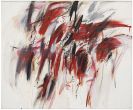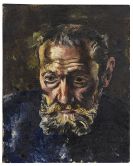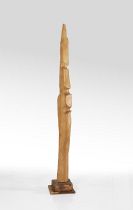
Herbert Zangs
Krefeld
1924 -
Krefeld
2003
After his war time military service and his internment as a prisoner of war, Herbert Zangs began to study art at the Düsseldorf art academy in 1945, where he was taught by Otto Pankok and others. He finished his studies in 1949. On his subsequent travels at home and abroad, Zangs produced numerous figurative works, which were shown in his first solo exhibition at the "Kaiser Wilhelm Museum" in Krefeld in 1950.
In 1951 he visited Paris for the first time and met Wols. That very same year Herbert Zangs moved into his studio at the "Künstlerhaus" in Sittarder Straße, in Düsseldorf, where he also created his first Abstract works. During the 1950s the artist mainly lived by producing figurative paintings on commission, while at the same time developing his actual abstract work.
In this time he produced his first "Ver-Weißungen" of structures and everyday objects, first collages and objects. In 1953 Zang visited a Düsseldorf exhibition of "Twelve American Painters and sulptors" of the Museum of Modern Art and was particularly fascinated by Jackson Pollock's work. The detachment of the canvas from the easel and the rhythmic gesture of the color application confirm Zangs in his own transgression of boarders and inspire him to further experiments.
In 1952 Herbert Zangs received the "Kunstpreis" of the city of Krefeld. In 1958 the prize of the Franklin Institute of America followed and in 1962 he was awarded the European prize for painting at the Ostende Biennale.
From 1962 to 1965 the restless artist moved to Southern France for a few years. Numerous sojourns abroad followed until Zangs was drawn back to his hometown of Krefeld in the early 1980s. Zangs made friends with numerous artists, his relationship with Wols and Lothar Quinte may have had a particular impact on his work. From the point of view of art history, Zangs work can be attributed to Art informel and divided into various groups, including the "Ver-Weißungen", "Rechenzeichen-Collagen", "Scheibenwischer-Bilder", "Pinselabwicklungen" and "Peitschenbilder", which are clearly separate from one another, but still reflect the artist's unique style.
After the exhibition "Das offene Bild" in the "Westfälisches Landesmuseum" in Münster, in 1993, Herbert Zangs' work was received differently.
Would you like to sell a work by Herbert Zangs?
Infos for seller
